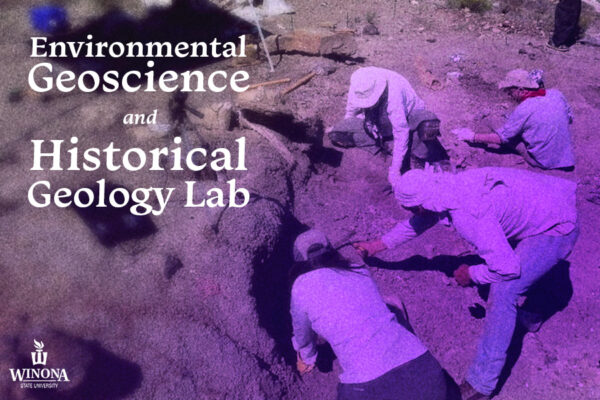Geoscience Department
The Geoscience Department at WSU is committed to providing high-quality classroom and field education in the many disciplines of geoscience.
WSU’s Geoscience majors will have a solid foundation in chemistry, physics, biology, and math. They also complete coursework in classic geological methods and topics, as well as broader perspectives of modern geoscience.
Our degree programs focus on integrated problem solving, preparing students for a wide range of potential career opportunities.
Geoscience faculty mentor students in original research projects. Because of their dedicated collaboration, our students are recognized both regionally and nationally for the quality of their research.
Facilities & Equipment
We have an impressive array of analytical and field equipment for our students to use in coursework and research projects.
Students routinely use geotechnical equipment that is typically only found in graduate-level departments and in industry. This hands-on training provides our students with a competitive edge in the job market and graduate school.
Our facilities and equipment include:
- Thin section preparation lab
- Nikon petrographic microscopes
- Sontek FlowTracker Acoustic Doppler Velocimeter
- Hach SensION156 Multi-parameter meters
- DR2400 Spectrophotometer
- 12-channel Geode seismic system
- AGI SuperSting Earth Resistivity Imager
- Trimble GeoExplorer XT GPS mapping units
- Nikon reflectorless pulse-laser Total Stations
- 25-seat GIS computing facility
- River Studies lab with research flume and Emriver stream tables
- Observatory with a 12-inch Meade RCX400 reflecting telescope with photographic capabilities
- Portable 8-inch Meade reflecting telescopes
- Fossil preparation lab
Location
The most impressive facility we have is right in our backyard. WSU is in the beautiful Upper Mississippi River Valley, surrounded by classic exposures of Early Paleozoic sedimentary rocks.
The region is part of the “driftless zone” that escaped the direct effects of the Pleistocene glaciation that covered much of the rest of Minnesota. Sinkholes and cavern systems are common in southeastern Minnesota, and crystalline rocks of the midcontinent rift system are less than a day’s drive from campus.
Winona State’s unique location enhances our programs’ field components and complements our modern, well-equipped classrooms and laboratory facilities.
Alumni
We love to stay in touch with our alumni. Whether you’re in town or just checking in online, we encourage you to reach out.
Please email Dr. Jennifer Anderson at jlanderson@winona.edu with news and updates:
- Update Your Contact Information
- Share Career or Family News
- Provide Job Announcements
- Submit Internship Opportunities
